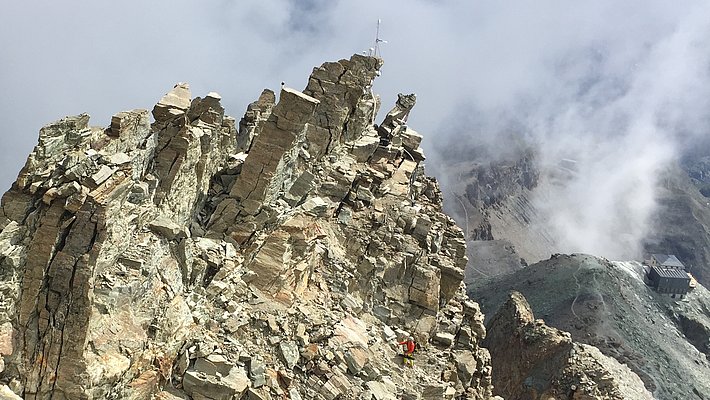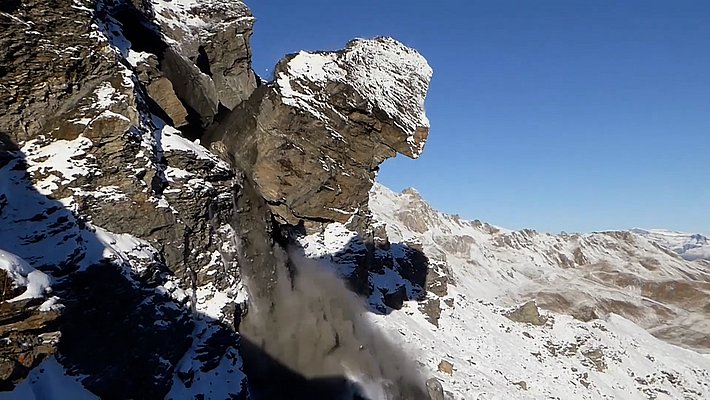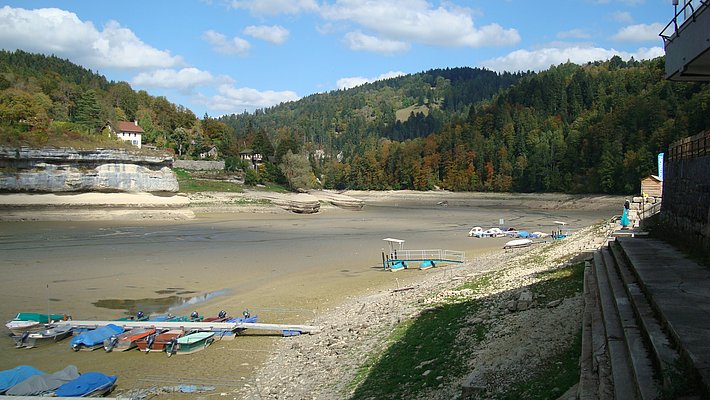The term "permafrost" refers to permanently frozen ground. If it thaws, there is a risk of natural hazards like rockfalls or debris flows. Our research in permafrost regions supplies us with vital information about the state of the permafrost. Our aim is to gain a better understanding of the processes affecting it and to detect risks at an early stage.
The term "permafrost" describes ground – such as rock, debris or moraine – that is permanently below a temperature of 0°C. But in summer, the topmost layer of the ground above the permafrost also warms up to above 0°C. This is known as the active layer. Permafrost covers some three percent of Switzerland’s territory and is mainly found in scree slopes and rock walls in cold locations at elevations above 2,500 metres. It is not so much the air temperature as the ground surface temperature that determines whether permafrost is present. Solar radiation and the depth and duration of snow cover all have a substantial impact on the ground surface temperature. Although permafrost is not immediately visible, there are some landforms that can indicate its presence, such as rock glaciers.
Data from boreholes ¶
Since 1996, we have drilled boreholes at thirty permafrost sites in the Swiss Alps. We have fitted these boreholes with thermometers and are investigating the snow cover. The permafrost measurement network run by the WSL Institute for Snow and Avalanche Research SLF provides essential information about the state of the permafrost and helps to understand the complex interactions between the ground surface and the underlying substrate. Nine of SLF’s boreholes are part of the Swiss Permafrost Monitoring Network, PERMOS, which is responsible for monitoring permafrost throughout Switzerland. We also use various measuring devices to collect information about the dynamics of rock walls and rock glaciers.
Thawing permafrost ¶
Permafrost is not a natural hazard. However, if the ice in permafrost melts, the ground may become less stable, which can result in subsidence, landslides, scree or soil creep, debris flows or rockslides.






